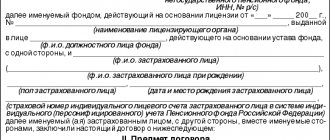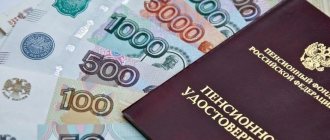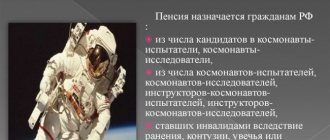In 2020, it became known that insurance premiums will be replaced by a new unified insurance fee. In essence, the country had to return to paying the unified social tax (UST), which accountants said goodbye to in 2010. Ultimately, the government decided not to change the name of the payment. As before, policyholders calculate insurance premiums, but pay them to the Federal Tax Service. There is one exception: as before the change of the contribution administrator, you need to pay contributions from industrial accidents to the Social Insurance Fund.
For simplicity, many accountants among their colleagues refer to insurance premiums as UST. In this article we will also use this concept. But it is worth remembering that the Tax Code of the Russian Federation does not contain such a term.
Contribution rates in 2020 (table)
Insurance premiums in 2020 include four types of contributions:
- in case of maternity and illness;
- medical;
- pension;
- for injuries.
The general rate of contributions in 2020 is 30% plus the rate of insurance premiums for accidents (the value is variable and depends on the danger of production). Tariffs in 2020 directly depend on the maximum value of the base for calculating insurance premiums. The tariff rates for the majority of payers (Article 425 of the Tax Code of the Russian Federation) are shown in the table.
Tariffs table
| Contributions to compulsory pension insurance, % | Contributions for insurance in case of temporary disability and maternity, % | Contributions for compulsory health insurance, % | ||
| If the amount of payments to an individual employee does not exceed 1,292,000 rubles | If the amount of payments to an individual employee exceeds 1,292,000 rubles | If the amount of payments to an individual employee does not exceed 912,000 rubles | If the amount of payments to an individual employee exceeds 912,000 rubles | 5,1 |
| 22 | 10 | 2,9 | 0 | |
Submit a single calculation of insurance premiums on time and without errors! Use Kontur.Extern for 3 months for free!
Try it
Insurance premiums for individual entrepreneurs
Today, the amount of payments for such a group of citizens as “self-employed” is fixed.
Self-employed are entrepreneurs who do not employ employees for their commercial activities, persons practicing privately: mediators, lawyers, and others. According to current laws, this part of businessmen will now deduct insurance payments exclusively for compulsory health insurance and compulsory medical insurance. Moreover, the calculation of pension payments is influenced by the size of the “tax” income of a businessman for 1 year, or a person practicing privately. Table 3. Insurance premiums for individual entrepreneurs
| Insurance premiums | Bid | |
| 2018 | 2019 | |
| Pension Fund (income less than RUB 300,000) | RUR 26,545 | RUB 29,354 |
| Compulsory medical insurance (income amount does not affect) | RUB 5,840 | RUB 6,884 |
| Pension Fund (income more than 300 thousand rubles) | 1%, no more than 212,360 rub. | 1%, no more than 234,832 rub. |
It is not necessary to pay social security payments for the self-employed, but this can be done voluntarily.
Since individual entrepreneurs make deductions only for themselves at a fixed rate of mandatory insurance payments, for businessmen with incomes of no more than 300 thousand rubles, it has now become convenient to calculate the additional contribution that is paid to the Pension Fund.
Where to submit reports
In 2020, contributions must be reported to the Federal Tax Service and the Social Insurance Fund.
The calculation of insurance premiums is submitted to the Federal Tax Service quarterly before the 30th day of the month beginning immediately after the reporting period.
How to fill out a contribution calculation
In addition to this calculation, policyholders need to submit Form 4-FSS. Since 2020, the form has become more simplified and contains figures only for “traumatic” contributions. The paper version of the form must be submitted by the 20th day, and the electronic version - by the 25th day of the month following the reporting period.
Maximum amount of income that is used for tax purposes
Since last year, payments have been calculated based on established tariffs. The interest rate is also influenced by the amount of income received by employees, which falls within the limits established annually. The size of the taxable base is calculated as the total income of the employee after performing work duties, paid both in cash and in kind.
The calculation of tax base coefficients is carried out annually on an accrual basis. The total amount of payments, which does not take into account the reduced rate, will be 30%. Also last year, employee income was limited. Thus, payments to the pension fund amounted to 1021 thousand rubles. The amount of the limit on the tax base increased due to the projected increase in the average salary, which was expected to reach 42,522 rubles.
Social insurance contributions in connection with loss of ability to work due to disability and maternity reached 815 thousand rubles. The maximum amount that affects the percentage of payments was calculated on the basis of statistical data on the increase in actual wages. Medical insurance for using the reduced rate is not limited.
Each business uses a revenue-based rate for each deduction category. When the limit is exceeded to the amount accepted, a reduced rate is used or the accrual of payments stops. This year, insurance rates are planned to be reduced and the VAT rate to be increased. Changes to taxation are expected in the near future due to the introduction of rates, the total amount of which will be 22%.
There is no need to talk about how important compulsory insurance is, because thanks to the insurance system, the population is provided with a pension, support for the disabled, medical care is provided, and it also prevents injuries at work. Every year the legislation changes, and the insurance system becomes more and more convenient, taking into account the needs of both payers and recipients.
Tariffs for foreigners in 2020
Next, we list the tariffs of insurance premiums that apply to foreigners (stateless persons) temporarily staying in Russia who are not highly qualified specialists (HQS), with the exception of citizens of the EAEU.
| Pension contributions (PPS) | 22% - within the limits of the base for calculating contributions; |
| 10% - above it | |
| Social contributions (VNiM) | 1.8% - within the limits of the base for calculating contributions; |
| 0% - above it | |
| Medical contributions (CHI) | not insured |
Below in the table we present the tariffs for 2020 for foreigners (stateless persons) permanently or temporarily residing in Russia who are highly qualified specialists (HQS).
| Pension contributions (PPS) | 22% - within the limits of the base for calculating contributions; |
| 10% - above it | |
| Social contributions (VNiM) | 2.9% - within the limits of the base for calculating contributions; |
| 0% - above it | |
| Medical contributions (CHI) | not insured |
Subjects of compulsory pension insurance
The list of direct participants in pension insurance is as follows:
- Insurer . This role can be performed by the Russian Pension Fund or another non-state fund with which an appropriate agreement has been concluded.
- Policyholder . The role of insurers is the persons who make contributions to the Pension Fund, that is, employers.
- Insured . Persons for whom contributions are made.
Rights and obligations
Let's look at the key rights and responsibilities of pension system subjects:
| Subject | Rights | Responsibilities |
| Insurer | Conducting inspections to identify violations on the part of policyholders | Calculation, assignment and payment of pension benefits |
| Interaction with the Federal Tax Service | Interaction with insured citizens | |
| Management of the fund's budget | ||
| Policyholder | Deduction of additional contributions to the funded part of the pension for employees | Timely payment of fees |
| Participation in pension insurance management | Proper registration | |
| Information support from the Foundation | ||
| Protection of legal rights in the courts | ||
| Insured person | Receiving your due pension benefits | Presentation of reliable information that may affect the amount of the pension and its availability |
| Free access to information about contributions to the Pension Fund and the formation of a future pension | ||
| Management of pension savings |
Registration of policyholders
Federal Law No. 167 stipulates:
- All policyholders are required to go through the registration procedure with the Pension Fund.
- In addition, the document contains information about who can be considered among the policyholders.
- Registration is carried out no later than three working days after the submission of all necessary documents.
- The result of registration is the issuance of a corresponding document to the policyholder.
Find out if your pension is preserved when you move to another region of Russia. An application for dismissal due to retirement is possible.
Insurance
Let's start, as usual, by defining today's topic, because you will never understand what we are talking about until you read the introduction. And since this time insurance premiums will be considered, it is better to repeat everything known about them, so that later stupid questions do not arise when examining in more detail any aspect of a separate section of advance payments.
As mentioned above, advance or insurance contributions are part of the entire huge taxation system of the Russian Federation. But it is important to remember that this is precisely the part that relates to making payments, although it also includes deadlines and reporting, but this is a more everyday issue, which we will also definitely get to later. In the meantime, we will look at the actual part of insurance payments, and a little later also the connection with taxation.
Compulsory social insurance in Russia
So, social and medical insurance is mandatory - there is a system of state social protection of Russian citizens. This works by providing a certain amount of money to citizens who find themselves in a difficult financial, social or medical situation. All these cases, although they are mainly spelled out in laws, are still very much dependent on many random aggravating and mitigating circumstances affecting a person.
In general, all insurance is a system that is designed to work only for citizens and protect their interests and lives in the first place. For example, assistance is provided in cases where:
- the citizen has lost his official job and earned income;
- a family member has become disabled due to old age;
- the citizen has been unemployed for a long time;
- the person has received any degree of disability;
- the citizen has serious and life-threatening diseases;
- there has been a loss of a breadwinner in the family;
- the woman became a mother and is temporarily unable to work.
There are many other cases when a person, a citizen of the Russian Federation, can be provided with social assistance, but they are either too private or based on the above, so we will not consider them in detail.
Let's move on to the systemic side of insurance and see what types or types are present in social insurance today. Each of them covers one of the above cases, so they can be very similar in wording and purpose. Compulsory social insurance in the Russian Federation consists of six possible parts:
- Compulsory social insurance in cases where a person is temporarily disabled or severely ill.
- Compulsory social insurance in the case when a citizen becomes a mother.
- Compulsory social insurance in case of work-related injuries or occupational diseases.
- Compulsory insurance upon the death of a compulsorily insured person or a member of his family who has not reached the age of majority.
- Compulsory health insurance.
- Mandatory pension insurance.
Income and expenses of funds
All funds collected from citizens, including entrepreneurs and organizations for workers, go to various funds. Each of them deals with a specific type of insurance, and they are distributed according to the principle of focus. Money is accumulated and distributed to:
- Mandatory Social Insurance Fund
- Compulsory Health Insurance Fund
- Pension Fund of the Russian Federation
Income
Let's figure out where all this money comes from, which goes to finance the listed funds. Since each of them has its own budget, which is absolutely independent of the entire budget system of the Russian Federation. That is why all these funds are also called extra-budgetary funds.
The source of money that goes to these organizations, as always, is the policyholders, who transfer everything to the funds. But sometimes it happens that there is a budget deficit, then the entire deficit is taken from the federal budget using transfer payments.

The amount of those same insurance premiums is calculated based on the rate for remuneration of the company’s employees, as well as taking into account various remunerations and payments in excess of wages. But for individual entrepreneurs and some others, the contribution amounts are determined slightly differently. We'll talk about this a little later.
Expenses
Now we’ll find out where all this money actually goes in order to understand how correctly and proportionately the collections of contributions are going. Basically, all the money goes to cover the popular cases that we described above. Now let us repeat and clarify that there are such payments as:
- Sick leave benefits
- Disability benefit
- Maternity benefit
- pregnancy and childbirth
- birth of a child
- child care up to 3 years old
- Financing of treatment and recreation at a sanatorium-resort complex
- Providing disabled people with the necessary technical means and prostheses for rehabilitation
- Expenses for maintaining hospitals and clinics
- Pension payments
When fees are not paid
Sometimes not all payments to employees are subject to mandatory insurance benefits. There are cases and special types of payments for which no fees are charged. Let's figure out what these special payments are. In the case of wages and all related matters, contributions are not paid from:
- daily payments to employees, but only in cases where the maximum amount of non-taxable payments is established in the acts of the organization;
- financial assistance of any size for:
- death of a close family member (husband, wife, children or parents according to the Civil Code of the Russian Federation);
- natural disaster or terrorist attack;
- in the event of an emergency, such as a robbery from an employee, a flood in the house; everything must be confirmed by a certificate from the relevant authorities;
- the birth or adoption of a child, but not more than 50,000 rubles per child, in the case where payments were made within the first year after the incident;
- 4 thousand rubles for employees for any purpose per year.
Other cases when contributions are not paid are for enterprise expenses, such as:
- compulsory employee health insurance for more than one year:
- under a voluntary insurance contract;
- when served in a clinic or hospital;
- employee life insurance;
- employee health insurance;
- pension non-state payments.
What it is
Like any similar system, compulsory pension insurance is aimed at protecting the insured. Let's find out what tools exist for this in the Russian Pension Fund.
Dear readers! The article talks about typical ways to resolve legal issues, but each case is individual. If you want to find out how to solve your particular problem , contact a consultant:
8 (800) 700 95 53
APPLICATIONS AND CALLS ARE ACCEPTED 24/7 and 7 days a week.
It's fast and FREE !
the federal law
Mandatory pension insurance, according to Federal Law No. 167, refers to a number of measures that are aimed at compensating the income of citizens before they receive a pension. The pension fund is the insurer, and working citizens are the insured persons.
The Pension Fund budget is adjusted annually by the Government. This takes into account incoming pension contributions and expenses associated with the payment of pension benefits. Receipts to the Pension Fund budget are made according to the tariff established by law - 22%.
The tariff forms both the insurance and funded part of the pension, and includes the following components:
- solidary part, or funds intended to pay the basic part of the insurance pension;
- individual part, or contributions that form the employee’s individual pension account (the amount of future benefits depends on this component).
Insurance pension
The insurance pension is intended to reimburse the insured person for their earnings and is paid to them monthly. Let's look at the types of pensions:
- payments related to reaching retirement age (to be able to receive an old-age pension, a citizen must have the required length of service and a specified number of pension points);
- payments related to disability (assigned to citizens with a disability group);
- payments in connection with the loss of a breadwinner (assigned to dependents who have lost a close relative).
The retirement age in the Russian Federation is considered to be 60 years for males and 55 years for females.
It is worth noting that some categories of citizens, the list of which is indicated in Art. 8 FZ-400, can retire before the established period (presence of dangerous working conditions and a number of professions).
Cumulative
A funded pension consists of the number of insurance contributions and the profit that appears from investing them. 6% of 22 , contributed by employers, goes to the formation of a funded pension.
The funded part of the pension is relevant for citizens born after 1967. In addition, a funded pension can also be formed for persons of more mature age, provided that contributions were made for them to the Pension Fund from 2002 to 2004.










